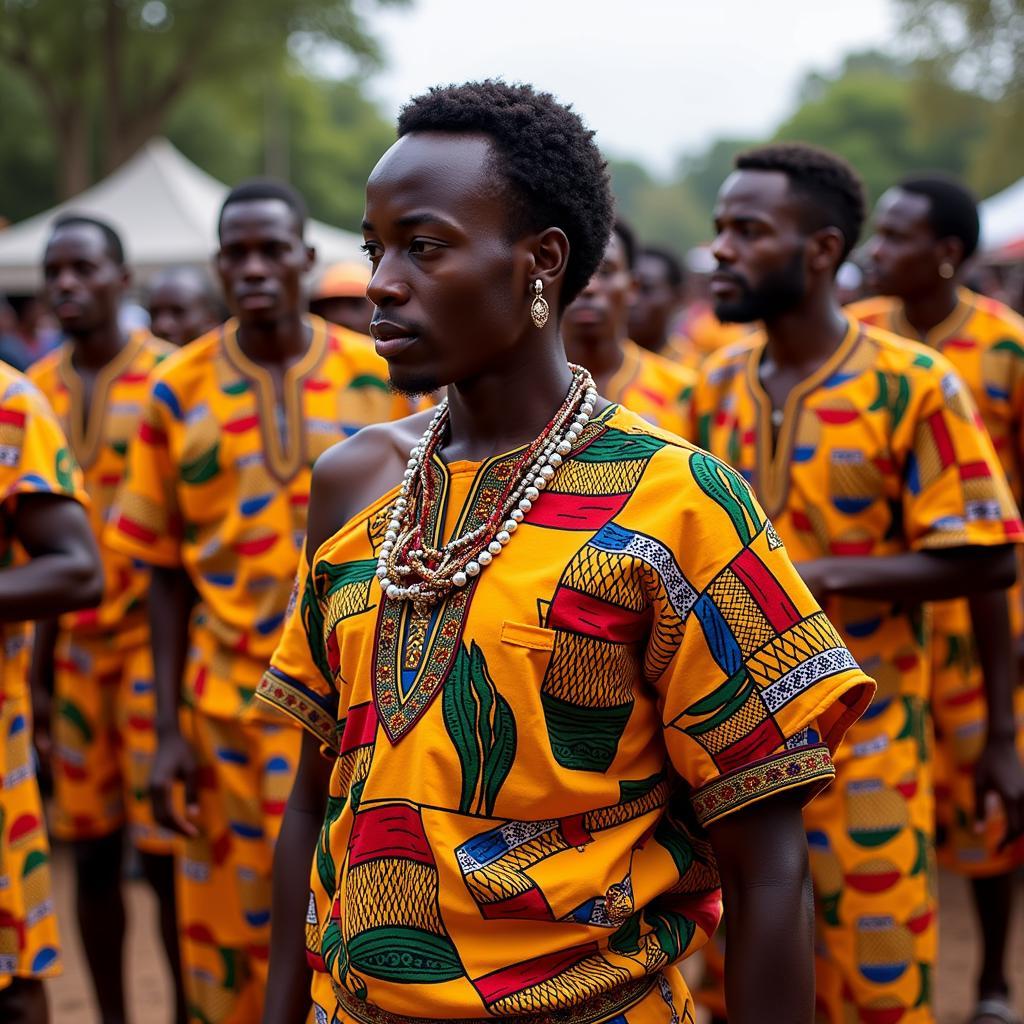Unlocking the Secrets of African Clicking Languages
African Clicking Languages, with their unique and intriguing sounds, represent a fascinating aspect of linguistic diversity. These languages, primarily found in Southern Africa, utilize clicks as consonants, creating a rhythmic and percussive quality unlike any other language family. This article delves into the world of these fascinating languages, exploring their origins, distribution, characteristics, and cultural significance. After reading this, you’ll have a newfound appreciation for the complexity and beauty of these often overlooked linguistic gems.
What Makes African Clicking Languages Unique?
What exactly are clicks? They are speech sounds produced by creating a vacuum with the tongue against the palate or teeth. While clicks exist in some other languages as interjections (like the “tsk-tsk” sound), in African clicking languages, they function as full-fledged consonants, forming an integral part of the word structure. Imagine a language where “!” or “ǂ” are letters in the alphabet – that’s the essence of these languages. Several language families in Southern Africa, most notably the Khoisan languages, feature these clicks prominently. The most famous example is perhaps the !Xóõ language, known for having the largest inventory of phonemes, including a vast array of click consonants.
The use of clicks creates a complex and nuanced soundscape, with different click types and accompanying sounds creating a wide range of possible pronunciations. These languages are often tonal as well, adding another layer of complexity. One can readily appreciate the difficulty learners face when confronted with such a unique phonological system.
Exploring the Khoisan Language Family
The Khoisan languages, often considered the oldest language families in the world, are primarily spoken in Southern Africa, including countries like Namibia, Botswana, and South Africa. While facing pressures from dominant languages like Afrikaans and English, these languages continue to be spoken by communities deeply connected to their cultural heritage. These languages, though diverse, share the common thread of click consonants.
Learning an African clicking language can be quite a challenge for non-native speakers. The precise articulation of clicks requires practice and a keen ear. Beyond the clicks, the grammatical structures and vocabulary can also be vastly different from more commonly studied languages.
African grey parrot noises are known for their mimicry skills, and some have even been observed imitating the click sounds of these languages. This observation further highlights the unique acoustic properties of these sounds.
Distribution and Cultural Significance of Click Languages
While predominantly spoken in Southern Africa, click consonants have intriguingly appeared in other languages around the world, hinting at potential ancient connections and migrations. For example, the Damin ceremonial language of Australia includes clicks, suggesting a possible, albeit distant, linguistic link.
These languages are not just a means of communication; they are deeply intertwined with the cultural identity of the communities that speak them. They are a testament to the rich linguistic tapestry of Africa and a reminder of the importance of preserving linguistic diversity.
African elephant camel illustrates the rich biodiversity of Africa, mirroring the continent’s linguistic richness, including the clicking languages.
How Are African Clicks Made?
Click sounds are produced using a complex coordination of the tongue, palate, and teeth. There are several different types of clicks, including dental clicks, alveolar clicks, and lateral clicks, each produced using slightly different tongue movements.
- Dental Clicks: Made by placing the tip of the tongue against the back of the upper teeth.
- Alveolar Clicks: Produced by placing the tongue against the alveolar ridge, just behind the upper teeth.
- Lateral Clicks: Created by placing the tongue against the side of the palate.
African girls xxx movies are not representative of the cultural richness and diversity of African languages, including the fascinating clicking languages discussed here. It’s important to focus on the linguistic significance rather than resorting to harmful stereotypes.
Why Are Click Languages Endangered?
Sadly, many African clicking languages are endangered, facing pressure from more dominant languages. Preservation efforts are crucial to ensure these unique linguistic treasures are not lost forever. Documentation projects, language revitalization programs, and educational initiatives are vital to ensuring their survival for future generations.
African girls dancing nude is completely unrelated to the topic of African clicking languages and should not be associated with this important cultural and linguistic discussion.
African drum beats instrumental provides a rhythmic backdrop that mirrors the percussive nature of spoken clicking languages, further demonstrating the richness of African cultural expression.
Conclusion
African clicking languages offer a captivating glimpse into the diversity and complexity of human language. Their unique sounds, complex structures, and cultural significance make them a valuable part of the world’s linguistic heritage. It is vital that we continue to support efforts to document, preserve, and celebrate these extraordinary languages. By understanding and appreciating these languages, we gain a deeper understanding of human history, culture, and the power of communication.
FAQ
- What is a click consonant? A click consonant is a speech sound produced by creating a vacuum with the tongue and another part of the mouth, resulting in a clicking noise.
- Where are clicking languages spoken? Primarily in Southern Africa, by speakers of the Khoisan languages.
- How many clicking languages are there? While the exact number is debated, there are several dozen distinct clicking languages.
- Are clicking languages related to each other? Most clicking languages belong to the Khoisan language family, suggesting a common origin.
- Why are clicks used in these languages? Clicks are used as regular consonants, just like other speech sounds in other languages.
- Are clicking languages difficult to learn? Yes, they can be challenging for non-native speakers due to the unique click sounds and often complex grammar.
- Why are clicking languages endangered? Many are endangered due to the dominance of other languages like Afrikaans and English.
Scenarios where these questions might be asked:
- A student researching different language families for a linguistics project.
- A traveler preparing for a trip to Southern Africa and wanting to learn about local languages.
- Someone interested in phonetics and the diversity of human speech sounds.
- A language enthusiast looking for unique and challenging languages to study.
Further Exploration
Explore more about African music and traditions on our website. Learn more about the African elephant and other fascinating wildlife.
Contact Us
For further assistance, please contact us at Phone: +255768904061, Email: [email protected], or visit us at Mbarali DC Mawindi, Kangaga, Tanzania. We have a 24/7 customer service team.

